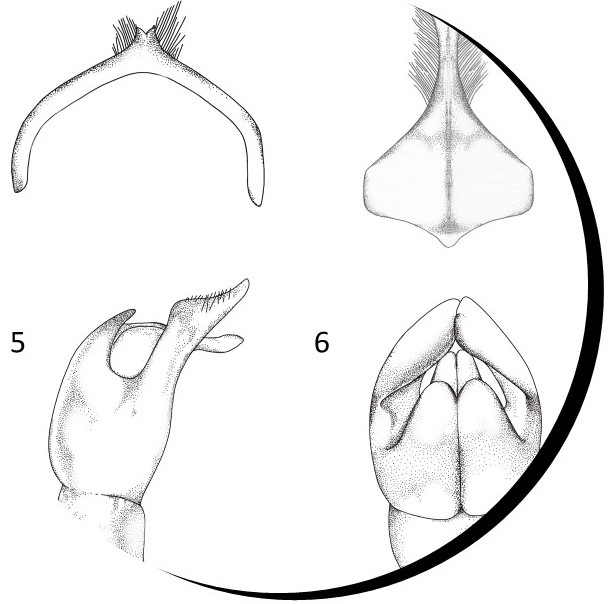Andrena nahua, a new bee species from central Mexico (Hymenoptera: Andrenidae: Andreninae)
DOI:
https://doi.org/10.17161/jom.i116.13718Abstract
Andrena nahua Neff, new species, is described from three males from central Mexico. It does not fit easily in any currently recognized subgenus of Andrena but can be distinguished from other Mexican Andrena by the combintion of its broad head, absence of facial maculation, striate frons, black color and weak tergal fascia.
References
Ascher, J. S. & J. Pickering, 2020. Discoverlife bee species guides and world checklist (Hymenoptera: Apoidea: Anthophila). https://www.discoverlife.org/mp/20q?guide=Apoidea_species ; last accessed 19 May 2020.
Cane, J. H. 1987. Estimation of bee size using intertegular span (Apoidea). Journal of the Kansas Entomological Society. 60:145-147.
Gusenleitner, F. & M. Schwarz, 2002. Welteweite Checkliste der Bienengattung Andrena mit Bemerkungen und Ergänzungen zu paläarktischen Arten (Hymenoptera, Apidae, Andreninae, Andrena). Entomofauna (Suppl. 12): 1-1280.
LaBerge, W. E. 1964. Prodromus of the American bees of the genus Andrena (Hymenoptera, Apoidea). Bulletin of the University of Nebraska State Museum. 4:279-316.
LaBerge, W. E. 1967. A revision of the bees of the genus Andrena of the Western Hemisphere. Part 1. Callandrena (Hymenoptera: Andrenidae). Bulletin of the University of Nebraska State Museum. 7:1-316.
LaBerge, W. E. 1986. A revision of the bees of the genus Andrena of the Western Hemisphere. Part XI. Minor subgenera and subgeneric key. Transactions of the American Entomological Society 111:440-567.
Michener, C. D. 2007. The Bees of the World [2nd Edition]. The Johns Hopkins University Press; Baltimore, MD; xvi +[i]+ 953 pp., + 20 pls.
Downloads
Published
Issue
Section
License
Copyright (c) 2024 John L Neff

This work is licensed under a Creative Commons Attribution-NonCommercial-NoDerivatives 4.0 International License.
Copyright for articles published in Journal of Melittology is retained by the authors, with first publication rights granted to the journal. By virtue of their appearance in this open access journal, articles are free to use, with proper attribution and permission of the authors, in educational and other non-commercial settings.





